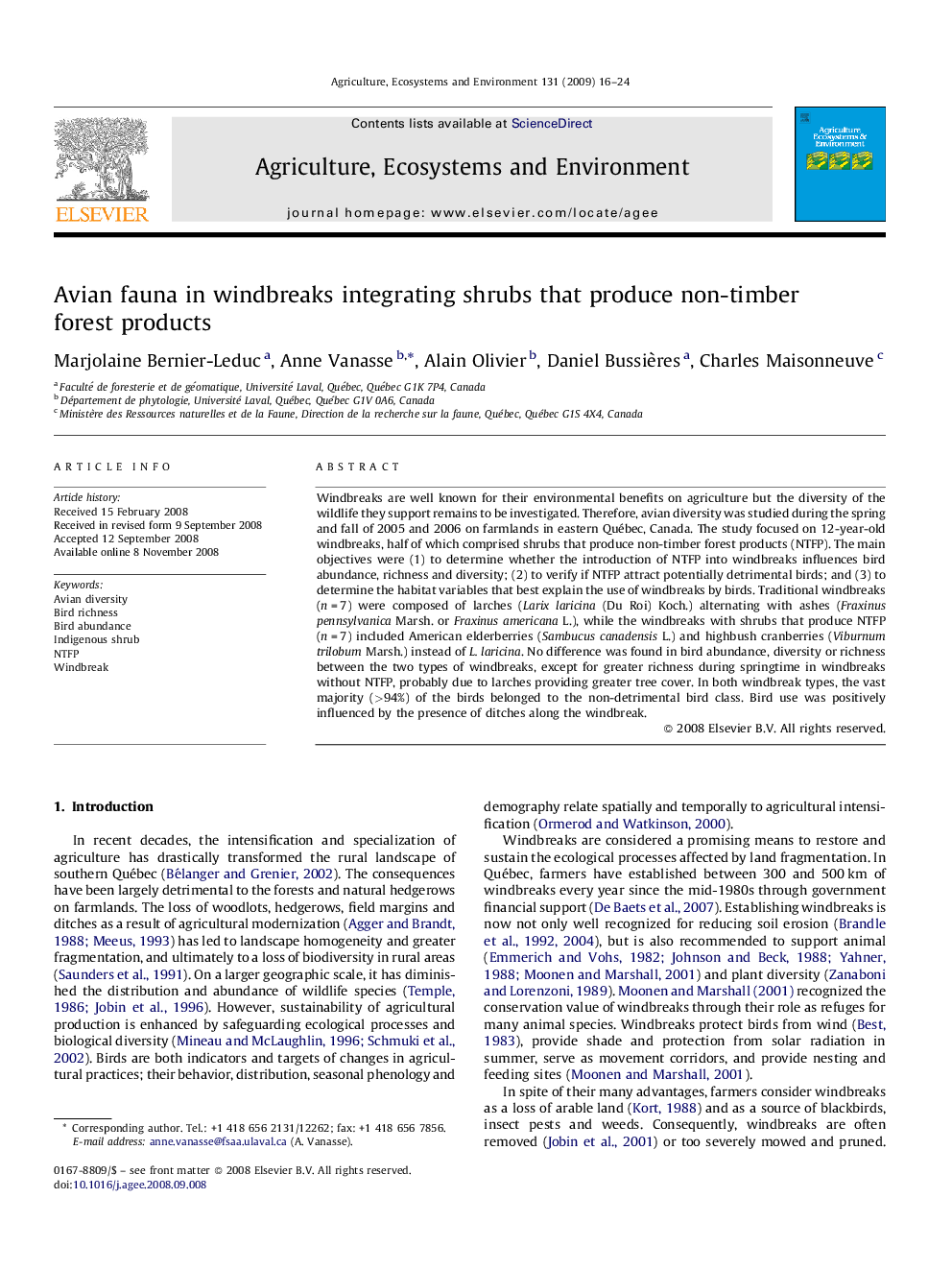| Article ID | Journal | Published Year | Pages | File Type |
|---|---|---|---|---|
| 2415207 | Agriculture, Ecosystems & Environment | 2009 | 9 Pages |
Windbreaks are well known for their environmental benefits on agriculture but the diversity of the wildlife they support remains to be investigated. Therefore, avian diversity was studied during the spring and fall of 2005 and 2006 on farmlands in eastern Québec, Canada. The study focused on 12-year-old windbreaks, half of which comprised shrubs that produce non-timber forest products (NTFP). The main objectives were (1) to determine whether the introduction of NTFP into windbreaks influences bird abundance, richness and diversity; (2) to verify if NTFP attract potentially detrimental birds; and (3) to determine the habitat variables that best explain the use of windbreaks by birds. Traditional windbreaks (n = 7) were composed of larches (Larix laricina (Du Roi) Koch.) alternating with ashes (Fraxinus pennsylvanica Marsh. or Fraxinus americana L.), while the windbreaks with shrubs that produce NTFP (n = 7) included American elderberries (Sambucus canadensis L.) and highbush cranberries (Viburnum trilobum Marsh.) instead of L. laricina. No difference was found in bird abundance, diversity or richness between the two types of windbreaks, except for greater richness during springtime in windbreaks without NTFP, probably due to larches providing greater tree cover. In both windbreak types, the vast majority (>94%) of the birds belonged to the non-detrimental bird class. Bird use was positively influenced by the presence of ditches along the windbreak.
